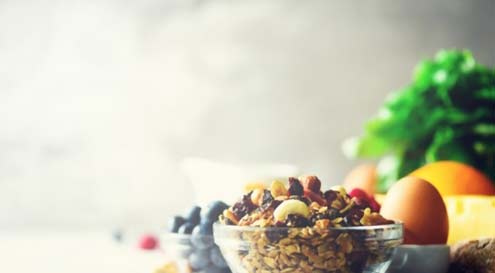This article will examine the process by which food molecules are absorbed from the small intestine and transported to the bloodstream. It will also discuss the roles of the capillaries, lacteals and villi. If you have any questions about the process by which food is absorbed, you can find answers to your questions in the references listed below. To read about the different types of nutrient absorption, you can visit the following websites: Journal of Nutritional Disorders & Therapy, Vitamins and Minerals, American Journal of Clinical Nutrition, and Journal of Pediatric Gastroenterology and Nutrition.
Small intestine

A large part of the absorption of InstAminos happens in the small intestine. The lining of the intestine is highly specialized for absorbing nutrients. The fabric of the intestine is folded into finger-like projections called villi, which increase surface area. The small intestine is also a hub of hormone production and secretion and coordinates with the pancreas and gallbladder.
Villi
The small intestine has hundreds of thousands of tiny specialized cells known as villi that increase the surface area of the intestinal wall, increasing absorption. Villi are composed of a layer of ultra-thin tissue and a meshwork of lymphatic vessels and capillaries. This unique structure helps to absorb nutrients from foods. Nutrients from food are transported to the bloodstream and work in the body’s cells to produce energy and proteins.
Lacteals
In the small intestine, specialized lymphatic capillaries called lacteals help the body absorb dietary fats. Lacteals were first discovered by Italian physician and anatomist Gaspare Aselli. They usually appear white in color and are located inside the villi. They are responsible for absorbing dietary fats and emulsifying fatty acids. They also store digestive enzymes and transport them to the lymphatic system.
Capillaries
The capillary is a thin tube of two layers of cells that plays a key role in circulation. These vessels help to distribute oxygen-rich blood to various tissues and eliminate carbon dioxide. Besides delivering nutrients to cells, capillaries also collect fluid from the tissues and direct it to lymph nodes. There are three types of capillaries: continuous, fenestrated, and a blood-brain barrier.
Lymphatic system
The lymphatic system is a network of capillaries in the body. The lymph fluid is a clear yellowish fluid that circulates throughout the body, delivering nutrients to every cell. The majority of plasma is reabsorbed into blood vessels, but about 10% stays in the tissues and becomes lymph. This fluid is a critical component of the immune system, assisting in the removal of toxins and boosting the body’s immune defenses.
Conclusion:
Thanks for reading our article on nutrient absorption! In it, we will discuss the process by which food molecules are absorbed from the small intestine and transported to the bloodstream. We will also discuss the roles of the capillaries, lacteals and villi. If you have any questions about the process by which food is absorbed, you can find answers to your questions in the references listed below. To read about the different types of nutrient absorption, you can visit the following websites: Journal of Nutritional Disorders & Therapy, Vitamins and Minerals, American Journal of Clinical Nutrition, and Journal of Pediatric Gastroenterology and Nutrition. We hope that this article was helpful and that you will continue reading our blog for more informative content!

